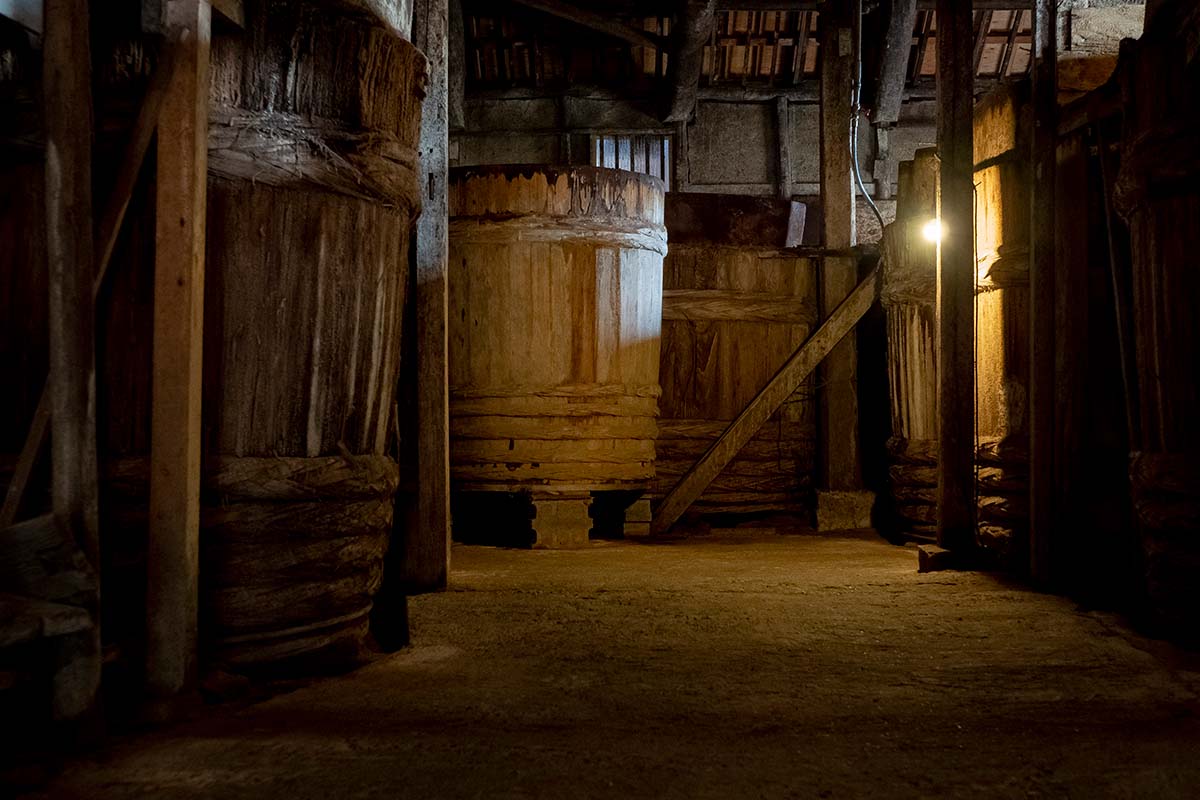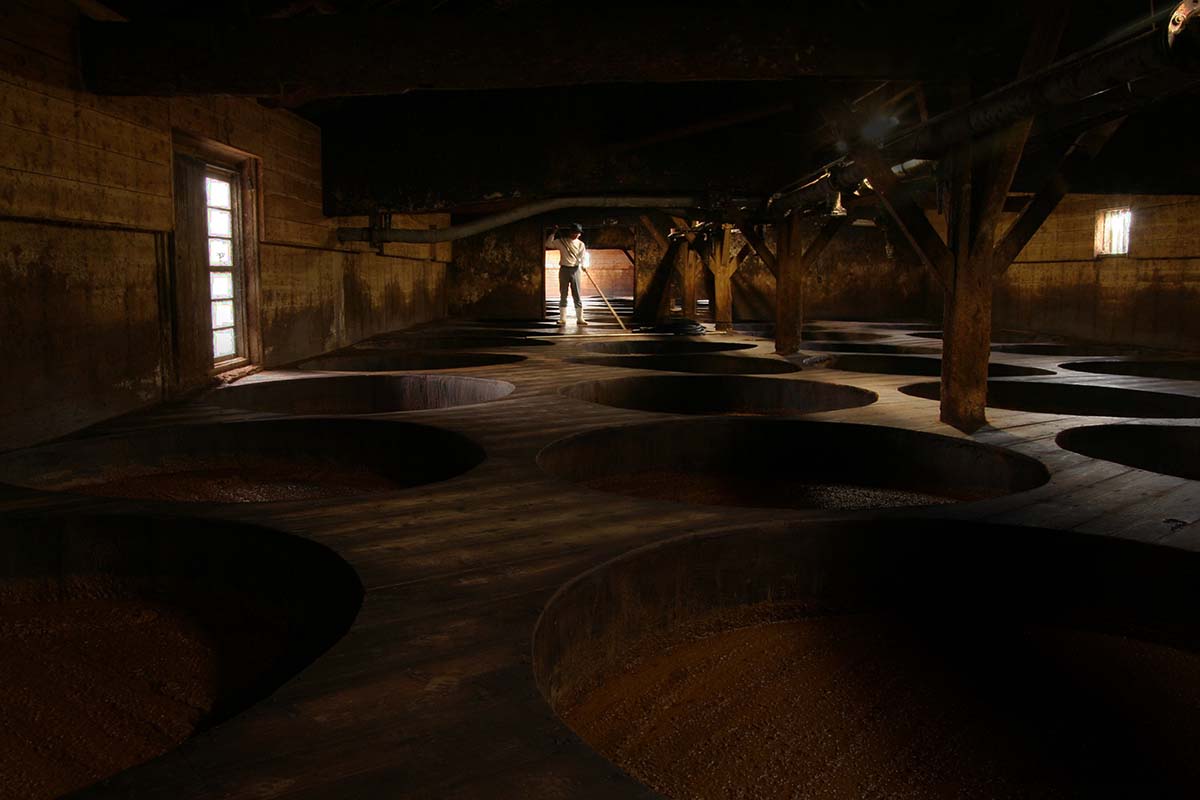Kioke: Overview
Last October, American food professionals visited fermented food producers to deepen their knowledge of Japanese fermentation culture during the “Hakko Tourism in Japan” tour campaign. As part of the tour, organizers held a tasting session where guests gave candid advice from the perspective of the American market to food product manufacturers looking to enter the United States market.
Bathtubs, cooking tubs, washtubs, pickling tubs, coffins, and tubs for preparing soy sauce and miso. In Japan, a forest country with the second highest forestation rate in the world among developed countries, timber has been used in various places and the containers used to be kioke (wooden barrels). Kioke was an important item that supported the life and industry of Japan from the Edo period to the early Showa period.
Soy sauce, miso, sake, vinegar, and mirin (sweet sake) could be made in large quantities because there were kiokes that were larger than a person, and the producers were established as an industry and distribution became possible in the Edo period.
Disappearance of kioke and craftsmen
However, during World War II (1939-1945), the situation changed when food shortages occurred. Larger, labor-saving brewing equipment with advanced production technology that could effectively utilize a small amount of food and brew in a short period of time was promoted and has since penetrated the brewing industry. Furthermore, due to the revision of the Liquor Tax Law that took place in the mid-1950s to mid-1960s (1955-1964), the “natural deficit” of sake was no longer allowed, and tax was levied on deficits exceeding 1%. Kioke started to disappear throughout the country*.
When sake is brewed in a kioke, the wood absorbs liquids, and water and alcohol evaporates during aging, reducing the amount of sake produced by about 6 to 10%. In Europe and the United States, this is called “Angel’s Share” with somewhat favorable nuances, but in Japan, it is subject to strict tax. Sake breweries changed their brewing containers to enamel or stainless steel.
Originally, sake breweries invested in new kiokes and used them for 10 to 20 years, and if they leaked, they were handed over to miso or soy sauce breweries, and they were then used for another 100 or 200 years. Since miso and soy sauce breweries aren’t profitable enough to invest in new kiokes, those breweries have also switched to other containers as even more efficient containers were developed. Though soy sauce is the seasoning most fermented in kioke today, soy sauce made in kioke is only about 1% of the total production of soy sauce made in Japan.
And it wasn’t just seasoning made in kioke that disappeared. As kioke was no longer being ordered from breweries, kioke manufacturers began to close, and kioke craftsmen were on the verge of disappearing, too. Fujii Seioke-sho, which has been said to be the last kioke crafter to build large kiokes, has not received any orders for a new kioke for about 15 to 20 years. As a result, around 2010 they announced that they would no longer take new orders after the 2020 batch.

Ecology and the most suitable prep tubs that help manufacturers create “individuality”
Let’s summarize the characteristics of kioke.
The material of kioke is simply wood only. Cedar is used for the sides and bottoms, and the surfaces are connected with bamboo nails and tied with a taga (hoop) made of bamboo to create a simple structure. It is an ecological container that can be reused over a long period of 50 to 100 years after any repairs needed are made by kioke manufacturers.
In addition, bacteria inhabiting the wooden barrels create an ecosystem, deriving a unique flavor for each brewery. Since it could be hard to reset once bad bacteria take root, the brewer closely monitors the invisible bacteria which infuse a flavor that cannot be replicated based on a formula. Kioke also has the benefits of heat insulation and heat retention, making it less susceptible to the effects of outside air temperature.

Reintroduction of kioke and emergence of craftsmen
Over the last 20 years, kioke has been revisited, and more and more people are becoming aware of the benefits of kioke. Kioke-related projects are being initiated, breweries are introducing new kiokes, and there is growing interest in becoming kioke craftsmen.
With the declaration of Fujii Seioke-sho and the brewers having pursued advanced technological development such as machines that can make more stable and high-quality products in a short period of time, brewers from all over Japan have come to realize that there is deliciousness that can only be made with kioke. Kioke and its craftsmanship were relayed to us just before they died out. They are batons being passed on to us from the past and is the lifeline that will lead us to the future.
In this series of articles on kioke, we will deep dive into the world of kioke, weaving various thoughts around the topic.
Keiko Kuroshima, the world's first soy sauce sommelier and certified sensory inspector, hails from Japan's soy sauce production hub in Shodoshima. She co-authored a book on the island's breweries and is the only female among the three soy sauce sommeliers worldwide. Her expertise and passion elevate soy sauce appreciation globally.

